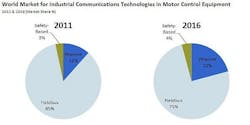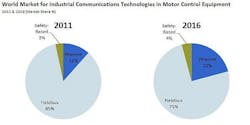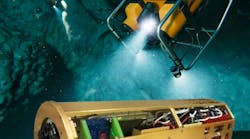LONDON, 14 March 2013. Worldwide use of Ethernet with motor drive and motion control applications will more than triple in the five years between 2011 and 2016, say market researchers at IHS Inc. in London. Ethernet accounted for 1.8 million new connected nodes in 2011.
New Ethernet nodes are forecast to account for more than 20 percent of the total new networked motor control products in 2016. This is a large increase from the estimated 12 percent in 2011, when Fieldbus protocols dominated new node connections.
Ethernet is quickly gaining ground in a market that is well known for being reserved and slow to adopt new technology.
"Ethernet, particularly certain industrial variants, is very well suited to drive and motion control applications," says IHS analyst Tom Moore. "The growing number of Ethernet protocols, which are high-speed, deterministic, and low jitter, mean its application has never been easier. Some of the most suited protocols are forecast annual growth rates exceeding 30 percent to 2016."
Industrial motion control is moving to Ethernet because of the protocols available, such as PROFINET, Ethernet/IP, POWERLINK and EtherCAT, which are suited to motor control applications, researchers say.
In particular, EtherCAT is well known for very high speed data transmission and low response times," Moore says. "Its adoption is forecast to grow very strongly to 2016, especially as its member count continues to increase."
Connection nodes to the higher network are set to increase, driven in part by an increasing number of ports per device, researchers say. Ethernet is set to outstrip Fieldbus technologies in almost all applications.
"In 10 to 15 years Ethernet will have replaced Fieldbus as the mainstream networking technology for motor control products," Moore says.
The World Market for Industrial Ethernet and Fieldbus Technologies - 2013 Edition includes analysis of industrial Ethernet and Fieldbus technologies used in motor control, process and control and discrete control.
For more information contact IHS online at www.ihs.com.




